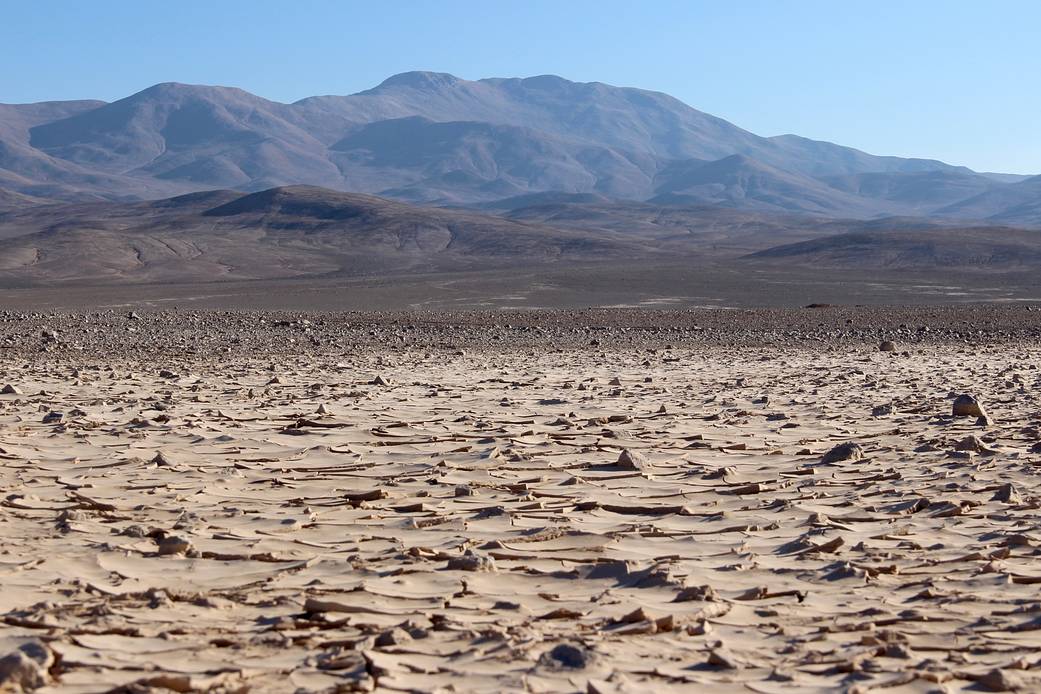The Atacama Desert in Chile is one of the driest places on Earth. However, a rare rain event did occur here in August 2017. The features in the foreground of this photo, taken six months later, resemble a muddy puddle that has dried up, suggesting that rainwater may have pooled here. NASA’s ARADS team spent a month in the Atacama in February 2018 studying microorganisms that may have thrived in the soils that were wet by the rain. They also tested a rover design that could be used one day to search for microbial life that could possibly have developed in other extreme environments, like Mars.
+++
The Atacama Rover Astrobiology Drilling Studies, or ARADS, project is designing tools and techniques that could be used to search for life one day on Mars or other places in the Solar System. The team’s prototype rover combines the ability to move across the surface, drill down to collect soil samples, and feed them to several life-detection instruments on board. The extreme conditions of Chile’s Atacama Desert provide one of the most Mars-like environments on Earth, where the team can test and refine these technologies and methods.
ARADS is led by NASA’s Ames Research Center in California’s Silicon Valley. Partners include NASA centers Goddard Space Flight Center in Greenbelt, Maryland, and the Jet Propulsion Laboratory in Pasadena, California, as well as Johns Hopkins University in Baltimore, Maryland, Honeybee Robotics in New York, the University of Antofagasta and CampoAlto SpA, both in Chile, and Spain’s Center for Astrobiology.



























